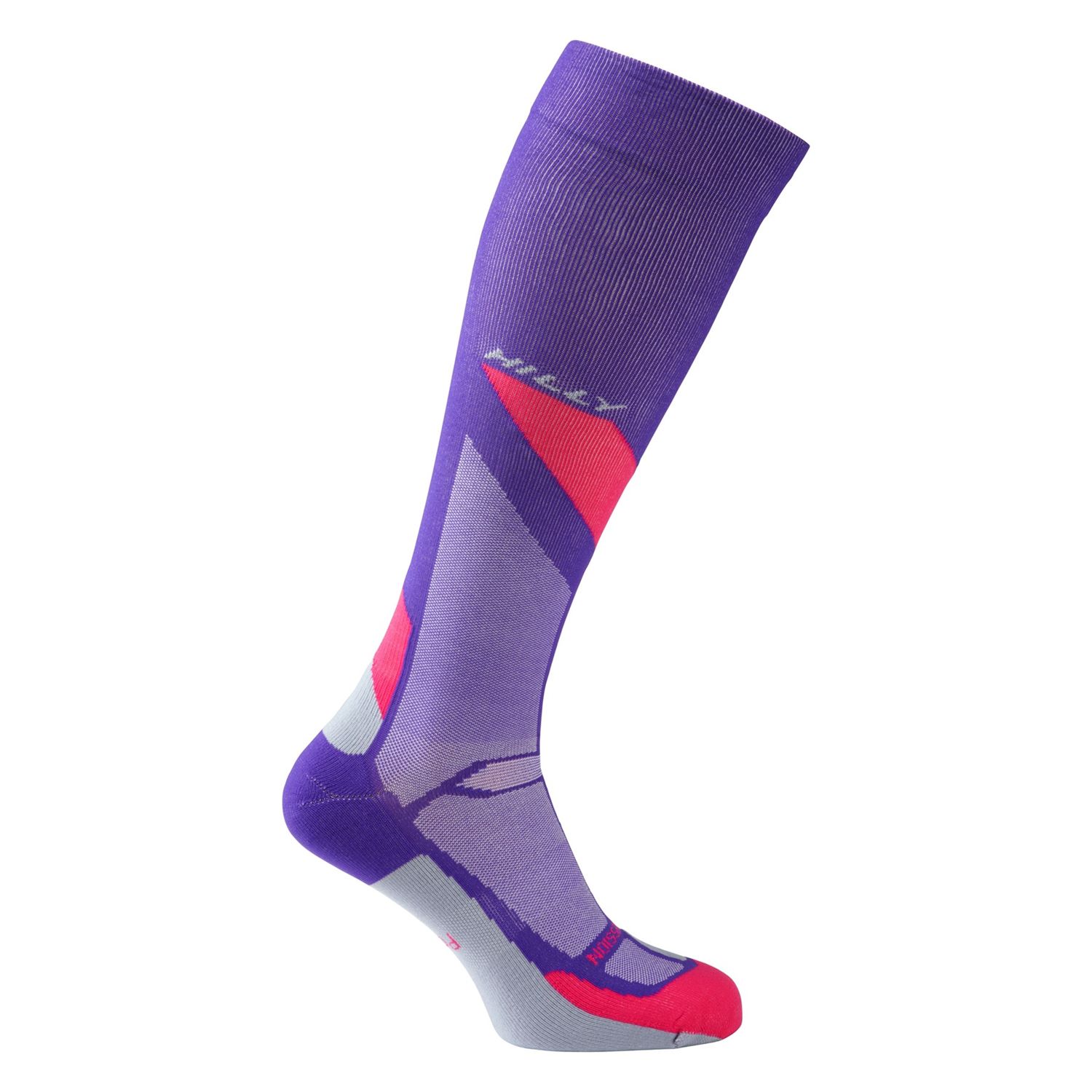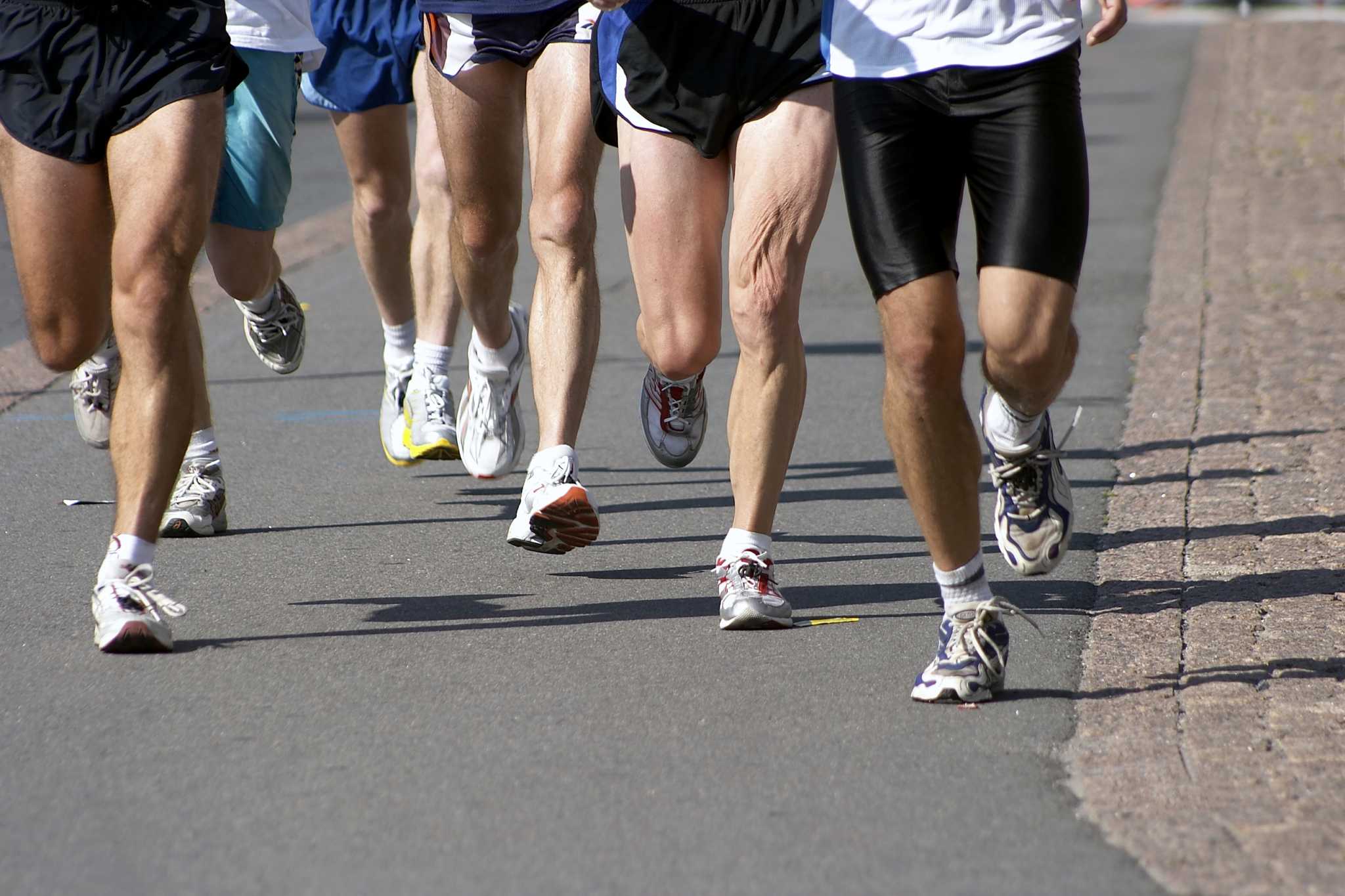Home>Misc>Featured>Which Muscle Fibers Are Best Suited For Running A Marathon


Featured
Which Muscle Fibers Are Best Suited For Running A Marathon
Modified: January 22, 2024
Discover the ideal muscle fibers for running a marathon. Featured article exploring the benefits of specific fibers in endurance running.
Introduction
Running a marathon is no small feat. It requires months of training, discipline, and mental resilience. But have you ever stopped to think about the role your muscles play in such a demanding endurance sport? Understanding the different types of muscle fibers and how they contribute to marathon running can help you optimize your training and performance.
Our muscles are made up of a combination of two main types of muscle fibers: Type I and Type II. These fibers differ in their capacity for endurance, strength, and speed. Type I fibers, also known as slow-twitch fibers, are responsible for long duration, low-intensity activities. On the other hand, Type II fibers, or fast-twitch fibers, are better suited for short bursts of high-intensity effort.
In this article, we will delve into the characteristics of Type I and Type II muscle fibers, compare their differences, and explore their roles in marathon running. We will also discuss whether one type of muscle fiber is more dominant in marathon runners, shedding light on which muscle fibers are best suited for this grueling endurance sport.
Understanding Muscle Fibers
To understand the role of muscle fibers in marathon running, it’s essential to have a basic understanding of the two main types: Type I and Type II.
Type I muscle fibers, often referred to as slow-twitch fibers, are built for endurance. They have a high concentration of mitochondria, which are responsible for producing energy. These fibers rely on oxidative metabolism, utilizing oxygen to break down glucose and release energy. Type I fibers are characterized by their resistance to fatigue and ability to sustain contractions for long periods. They are ideal for prolonged, low-intensity activities such as marathon running.
Type II muscle fibers, also known as fast-twitch fibers, are designed for speed and power. They can generate large amounts of force but fatigue more quickly compared to Type I fibers. Type II fibers are further subdivided into Type IIa and Type IIb fibers. Type IIa fibers possess a good balance of endurance and power, making them suitable for activities like sprinting and middle-distance running. Type IIb fibers, on the other hand, are predominantly used for explosive movements and fatigue rapidly.
It’s important to note that individuals have a unique distribution of muscle fiber types, with some naturally geared towards endurance activities, while others excel in explosive power. Genetics play a significant role in determining an individual’s muscle fiber composition, but training methods can also influence the development and adaptation of muscle fibers.
Training for endurance sports like marathon running typically results in an increase in Type I muscle fibers. Prolonged aerobic activity stimulates the growth and development of these fibers, enhancing their endurance capabilities. Conversely, activities that promote explosive power, such as weightlifting or speed training, can lead to an increase in Type II muscle fibers.
Type I Muscle Fibers
Type I muscle fibers, also known as slow-twitch fibers, are essential for endurance activities such as marathon running. These fibers are characterized by their ability to sustain contractions for prolonged periods without fatigue. They have a high capacity for aerobic metabolism, relying on oxygen to break down glucose and produce energy.
One of the key features of Type I muscle fibers is their rich supply of mitochondria. Mitochondria are often referred to as the “powerhouses” of the cell, as they generate energy through aerobic respiration. The abundance of mitochondria in Type I fibers allows for efficient energy production, making them well-suited for long-duration activities.
Compared to Type II fibers, Type I fibers contract more slowly but are capable of maintaining contractions over extended periods. They have a greater density of capillaries, which ensures a steady supply of oxygen and nutrients to the muscle. This increased oxygen supply enables Type I fibers to continue producing energy efficiently without relying on anaerobic pathways.
Another characteristic of Type I muscle fibers is their high content of myoglobin, a protein that binds to oxygen. Myoglobin facilitates the diffusion of oxygen from the blood to the muscles, enabling sustained aerobic metabolism. This helps prevent the build-up of lactic acid, a byproduct of anaerobic metabolism that leads to fatigue.
Training targeting Type I muscle fibers involves long-duration, low-intensity activities such as distance running. Endurance training stimulates adaptations in the muscles, increasing the number of mitochondria and capillaries within Type I fibers. These adaptations improve oxygen delivery and enhance the fibers’ endurance capabilities.
In addition to their endurance properties, Type I fibers also contribute to maintaining posture and stability during prolonged activities. They are responsible for maintaining a steady pace throughout a marathon and play a crucial role in preventing muscle fatigue and injury.
While Type I fibers excel in endurance activities, they may not generate as much force as Type II fibers. This is due to their slower contraction speed and lower force-generating capacity. However, their ability to sustain contractions for extended periods makes them invaluable for marathon runners, allowing them to maintain a consistent pace and endure the rigors of long-distance running.
Type II Muscle Fibers
Type II muscle fibers, also known as fast-twitch fibers, are responsible for generating force and power. Compared to Type I fibers, Type II fibers contract more quickly but fatigue more rapidly. They are well-suited for activities that require short bursts of high-intensity effort, such as sprinting or weightlifting.
There are two subtypes of Type II muscle fibers: Type IIa and Type IIb. Type IIa fibers have characteristics of both Type I and Type II fibers, making them versatile for activities that require a combination of endurance and power. They have a relatively high oxidative capacity, allowing them to function aerobically for a certain duration before transitioning to anaerobic metabolism.
On the other hand, Type IIb fibers, also known as fast-glycolytic fibers, are geared towards rapid and explosive movements. These fibers rely primarily on anaerobic metabolism, breaking down glucose without the presence of oxygen to generate energy. As a result, they fatigue quickly but are capable of producing rapid and forceful contractions.
Type II muscle fibers have fewer mitochondria and a lower density of capillaries compared to Type I fibers. This limits their aerobic capacity but allows them to rely on anaerobic pathways, producing energy rapidly when needed. They also have a relatively larger diameter and contain more myosin, a protein responsible for generating force during muscle contractions.
Training methods that promote explosive power and strength, such as high-intensity interval training (HIIT) or resistance training, can lead to adaptations in Type II muscle fibers. These adaptations may include an increase in the size and number of myofibrils within the fibers and an improvement in their anaerobic metabolism capabilities.
While Type II fibers may not possess the same endurance capabilities as Type I fibers, they are crucial for activities that require speed and power. In marathon running, Type II fibers play a role during surges or sprints, allowing runners to increase their pace and finish strong. However, it’s important for marathon runners to strike a balance between endurance training for Type I fibers and maintaining some level of strength and power in their Type II fibers.
Understanding the characteristics of Type II muscle fibers can help marathon runners tailor their training to include exercises that target both endurance and power, optimizing their performance and reducing the risk of injuries.
Comparing Type I and Type II Muscle Fibers
Type I and Type II muscle fibers possess distinct characteristics that make them well-suited for different types of physical activities. Let’s compare these two fiber types to understand their differences and how they contribute to athletic performance.
1. Contraction Speed: Type I fibers contract more slowly compared to the fast-twitch Type II fibers. The slower contraction speed of Type I fibers allows for sustained contractions over longer periods.
2. Endurance vs. Power: Type I fibers excel in endurance activities due to their high resistance to fatigue and their reliance on aerobic metabolism. They are well-suited for activities that require a low-intensity, long-duration effort, such as marathon running. In contrast, Type II fibers are better equipped for short bursts of high-intensity effort, delivering the power needed for activities like sprinting or weightlifting.
3. Mitochondrial Density: Type I fibers have a higher concentration of mitochondria, which enables them to produce energy efficiently through aerobic metabolism. This greater mitochondrial density allows Type I fibers to rely on oxidative pathways and sustain contractions for extended periods. Type II fibers, on the other hand, have fewer mitochondria but possess a higher capacity for anaerobic metabolism, allowing for rapid energy production but with limited endurance.
4. Fatigue Resistance: Type I fibers have a higher resistance to fatigue compared to Type II fibers. They can sustain contractions for longer durations without succumbing to muscle exhaustion. This makes Type I fibers crucial for activities that require prolonged efforts, such as marathon running.
5. Fiber Size: Type II fibers generally have a larger diameter and contain more myosin, a protein responsible for generating force during muscle contractions. This allows Type II fibers to generate greater force and power compared to the smaller Type I fibers.
It’s important to note that individuals have varying compositions of Type I and Type II muscle fibers. Some individuals may have a higher proportion of Type I fibers, making them naturally more suited for endurance sports like marathon running. Others may have a higher proportion of Type II fibers, which can enhance their performance in activities that require explosive power.
Both the distribution of muscle fibers and their ability to adapt to training stimuli can be influenced by genetics and specific training methods. Endurance training, like long-distance running, can result in an increase in Type I fiber size and overall oxidative capacity. On the other hand, high-intensity resistance training can lead to hypertrophy and enhanced strength in Type II fibers.
A balanced training approach that targets both Type I and Type II muscle fibers is crucial for optimizing athletic performance. Marathon runners, for example, need to develop and maintain their endurance capabilities through aerobic training while also incorporating strength and power exercises to preserve some level of Type II fibers for surges or sprints during a race.
The Role of Muscle Fibers in Marathon Running
When it comes to marathon running, the role of muscle fibers is crucial in determining an athlete’s performance and endurance. The combination of Type I and Type II muscle fibers working together ensures the efficient utilization of energy and the ability to sustain a steady pace throughout the long-distance race.
Type I muscle fibers, with their high endurance capabilities, play a significant role in marathon running. These slow-twitch fibers are responsible for maintaining a continuous and steady pace, helping to conserve energy and prevent premature fatigue. Their reliance on aerobic metabolism allows marathon runners to utilize oxygen efficiently, providing a sustainable energy source for the duration of the race.
In contrast, Type II muscle fibers, with their fast-twitch characteristics, contribute to marathon running in several ways. Although not the primary fiber type utilized during the majority of the race, Type II fibers play a role during moments that require a surge of speed or power. For example, during a sprint to the finish line or when tackling inclines, Type II fibers provide the necessary force and power to overcome these challenges.
The ability to recruit both Type I and Type II muscle fibers effectively during a marathon is crucial for optimal performance. This coordinated effort ensures that the slow-twitch fibers can provide the endurance needed for the majority of the race, while the fast-twitch fibers kick in when a burst of speed or extra power is required.
Furthermore, the distribution and composition of muscle fibers can influence an athlete’s predisposition for marathon running. Endurance athletes often have a higher proportion of Type I muscle fibers, providing them with a natural advantage in long-distance events. This higher oxidative capacity allows for sustained energy production without relying heavily on anaerobic pathways.
Training plays a significant role in optimizing muscle fiber recruitment and adaptation for marathon running. Endurance-focused training programs help improve the endurance capacity of Type I fibers through activities such as long-distance runs and tempo runs. Incorporating strength and power exercises into training routines can also help preserve Type II fibers, ensuring they remain capable of providing the necessary force and power during key moments in the race.
Overall, the role of muscle fibers in marathon running is a delicate balance between endurance and power. The ability to utilize both Type I and Type II fibers efficiently can contribute to better endurance, speed, and overall performance. Understanding the characteristics of these muscle fiber types and tailoring training methods accordingly can help marathon runners reach their full potential on race day.
Which Muscle Fiber Type is More Dominant in Marathon Runners?
The composition of muscle fiber types can vary among individuals, and genetics play a significant role in determining an athlete’s muscle fiber dominance. However, studies have shown that marathon runners tend to have a higher proportion of Type I muscle fibers compared to the general population.
Marathon running is an endurance sport that requires the ability to sustain a consistent pace over a long period. Type I muscle fibers, with their exceptional endurance capabilities, are well-suited for this type of activity. These slow-twitch fibers rely on aerobic metabolism and possess a high concentration of mitochondria, allowing them to generate energy efficiently over prolonged periods. The ability to use oxygen effectively and avoid the build-up of lactic acid is crucial for marathon runners to maintain their pace without succumbing to muscle fatigue.
Research studies have found that elite marathon runners often have a higher proportion of Type I muscle fibers compared to recreational runners or individuals who are not involved in distance running. This higher ratio of slow-twitch fibers provides them with a natural advantage in long-distance events, allowing for improved endurance and a better ability to sustain a steady pace throughout the race.
While the dominance of Type I muscle fibers is prevalent in marathon runners, it’s important to note that they still possess a significant proportion of Type II fibers, particularly the Type IIa subtype. These Type IIa fibers have characteristics that make them adaptable to both endurance and power requirements. This versatility allows marathon runners to call upon these fibers during moments that require a surge in speed or power, such as during sprints or uphill sections of the course.
It’s worth mentioning that training also plays a role in muscle fiber dominance for marathon runners. Endurance-focused training methods, such as long-distance running combined with tempo runs and interval training, can lead to adaptations in Type I muscle fibers, increasing their endurance capabilities. At the same time, incorporating strength and power exercises, such as hill sprints or resistance training, can help preserve some level of Type II muscle fibers, ensuring a balance between endurance and power for optimal performance.
While it may be advantageous for marathon runners to have a dominant proportion of Type I muscle fibers, it’s important to remember that individual variations exist. Some runners may have a more balanced distribution of muscle fiber types, allowing them to excel in both endurance and speed. Ultimately, success in marathon running depends on training, genetic factors, and the ability to optimize the performance of both Type I and Type II muscle fibers.
Conclusion
In conclusion, muscle fibers play a crucial role in marathon running, determining an athlete’s performance, endurance, and ability to maintain a steady pace throughout the long-distance race. Type I muscle fibers, with their exceptional endurance capabilities and reliance on aerobic metabolism, are dominant in marathon runners. These slow-twitch fibers allow for sustained contractions, efficient energy production, and resistance to fatigue.
While Type I muscle fibers are crucial for marathon running, Type II fibers, particularly the Type IIa subtype, also contribute to an athlete’s performance. These fast-twitch fibers provide the necessary force and power required for sprints, surges, and overcoming challenges like inclines during the race.
Marathon runners often have a higher proportion of Type I muscle fibers compared to the general population, giving them a natural advantage in endurance events. However, they still possess a significant number of Type IIa fibers, allowing for versatility and the ability to tap into speed and power when needed.
Training methods play a significant role in optimizing muscle fiber recruitment and adaptation for marathon running. Endurance-focused training, such as long-distance runs and tempo runs, improves the endurance capacity of Type I fibers. Incorporating strength and power exercises helps preserve Type II fibers, ensuring a balance between endurance and power.
In the world of marathon running, there is no one-size-fits-all answer to muscle fiber dominance. Individual variations exist due to genetic factors and training methods. Some runners may have a more balanced distribution, allowing them to excel in both endurance and speed.
Understanding the characteristics and roles of both Type I and Type II muscle fibers is essential for marathon runners. It allows them to tailor their training methods and optimize their performance by focusing on increasing endurance, improving speed, and preserving a balance between the two fiber types.
In the end, a successful marathon performance relies on the harmonious coordination and utilization of both Type I and Type II muscle fibers, enabling athletes to conquer the 26.2-mile challenge and achieve their personal best.









